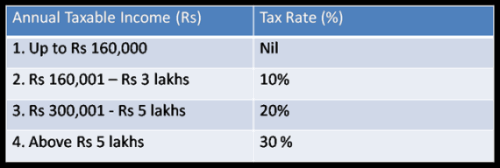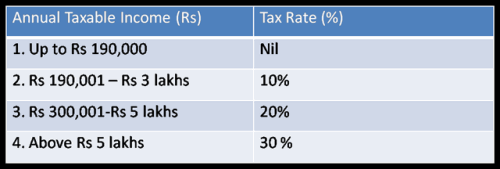Typically, as a salaried tax payer you'll need to have the following items at hand for filing your Income Tax Return. This might vary on a case by case basis.
Here’s a quick guide to the documents you will need for the Assessment Year 2012-13 that will help you prepare and file your Income Tax Return.
PAN number
Verify your PAN number online with the Income Tax Department before filing your Income Tax Return by going to this link: https://incometaxindiaefiling.gov.in/portal/knowpan.do
Form-16 issued by your employer
A Form-16 is a statement issued by your employer which has details of your Salary, the taxable salary amount after various perks and allowances, the TDS deducted by your employer, the deductions you have claimed and the overall tax due. TDS is Tax Deducted at Source. Your employer will have already deducted some portion of your salary and deposited it with the Income Tax Department.
This is a good starting point to start preparing your tax return.
Bank statements / passbook for Interest Income on bank deposits.
Note that you have to declare all Interest Income earned in the Financial Year 2011-12 in your Income Tax Return. A lot of people forget to do this, so please go through your bank statements and find out the Interest received.
Statements of Interest Income besides Bank deposits
Sometimes you may have fixed deposits which may have matured, debentures which yield interest. Take a look and make sure to declare this income on your Tax Return.
TDS certificates issued to you by your bank and others
TDS may have been deducted on your Interest Income by your bank. Check whether any TDS was deducted. You can ask the Bank to issue you a TDS statement. Declare these TDS entries in your Tax Return to reduce your tax liability.
Form 26AS
This is one of the most important documents that you should look at while preparing and filing your Income Tax Return.
Form 26AS reflects all the Income Tax received by the Income Tax Department with respect to you. This is a tax credit statement which shows TDS payments, voluntary tax payments made by you.
This Form-26AS should match all your TDS certificates issued to you by your employer, your bank etc.
If there is a mismatch you may have a tough time getting your tax refund. In case there is a mismatch between your TDS certificates and Form-26AS, you should contact your employer or your bank. They might have to inform the Income Tax Department of the TDS they have deducted.
Proof of investment under Section 80C
Investments done under LIC, NSC, PPF, school fees of your children qualify for Section 80C deductions.
Payment towards the principal of your Housing Loan also qualifies for deductions under Section 80C. The maximum limit for claim under section 80C is Rs. 1 Lakh.
Charitable donation statements
Donations that can be claimed for tax deductions under Section 80G.
Typically the receipt issued by the charitable organization you donate to mentions the eligibility under Section 80G.
For making sure you can avail of your tax deduction, make sure you quote the PAN number of the charitable organization.
Interest paid on housing loan.
If you pay EMI towards housing loan for a house that you live in: The Interest paid on housing loan is eligible for tax saving. The upper limit for tax saving is Rs 1,50,000.
If you pay EMI towards housing loan for a property that you rent out to others: The Interest paid on housing loan is eligible for tax saving. There is no upper limit for Interest paid exemption on rental property.
Other (less common) documents:
Proof of investment under Section80CCF:
Investments in Infrastructure bonds upto Rs. 20,000 can be claimed as tax deduction under section 80CCF.
Proof of investment under Section 80E:
Interest Paid on Education loan is tax deductible and can be claimed under Section 80E.
Proof of investment under Section 80D:
Medical Insurance payments for your family and your parents can be claimed here.
Proof of Disabilities
If you have disabilities, you might want to check up on Section 80U. If you have dependents with disabilities then check on Section 80DD.
Stock trading statement:
If you have sold any stock in the Financial year 2011-12, then you might have had Capital Gain or Capital Loss. This has to be declared in your Income Tax Return. Take a look at your brokerage account and then declare your Capital Gain.
Capital gain on sale of property
In case you sold any property or house or land or anything of value, you may have had a Capital Gain or Capital Loss. You have to declare this in your Income Tax Return.
Overall the key take away is - Look at your Form-26AS to ensure that your records match those of the Income Tax Department.



